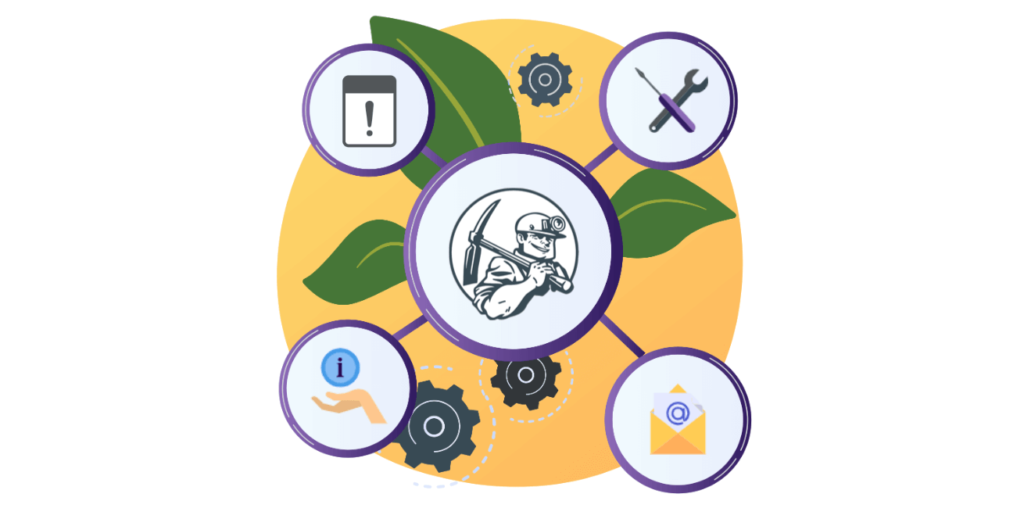We currently live in the omnichannel world and consumers have the possibility to contact companies in a dozen different ways, from chats to social media, from emails to dedicated platforms. Over the past few years, this ease of interaction with companies by customers, has caused the number of trouble tickets to grow excessively and proportionately with the support team’s work.
When a customer creates a new support request through any of the available channels, the operator needs to categorize and sort it first of all. Based on the company’s dimension and complexity, the sorting is managed, for example, according to the country of reference (language), the reference team (category) and the person who will actually need to handle it. All of this needs to happen by ensuring that processes are performed correctly and the request is answered within a reasonable time, other than by constantly informing the customer about the various steps, to be able to offer a flawless Customer Experience.
Imagine if the request was wrongly classified and sorted to the wrong country or team, or if it was left in line for too long. What would happen? The customer would not see his/her request as solved, nor as taken over, he would get angry and probably storm the company with new requests, by using all the other channels at disposition. And if the tickets were 100? The situation would become unmanageable.
As we will show you in this article, Artificial Intelligence (AI) fortunately automates mechanical and repetitive tasks in a fast, simple way and guarantees that they are performed immediately and faultlessly. Therefore, your agents will not waste any time and they will be able to focus exclusively on responding to customers.
What is ticket classification?
Classifying a ticket means assigning a tag or category to the request we are receiving.
For example: What language is it in? Is it a refund request? A technical issue? Some information on schedules?
At this point, we should insert the proper tag or category and assign the ticket to the team that is taking care of it. All of which, in theory, is very easy.
However, we know that in reality an agent should read the ticket, be it long or short, and only then should he classify it as one of the suggested categories, which could be a dozen or a hundred. Precisely for this reason, the operators decide to directly use the “other” category to make sure they are not wrong far too often.
What does this entail? Our agents will spend most of the time reading and trying to assign tickets to a wrong or too broad category.
What does this mean? We would waste a lot of time that could be used for responding instead. By not receiving timely responses to their tickets, our customers will get angry about the terrible Customer Experience.
Fortunately, technology comes to our rescue now. Thanks to Machine or automated Learning, the machines understand and classify texts and sentences for us. Then, why let a man do a machine’s job?
In this article’s continuation, we explain to you how to use a machine to automate customer support processes.
Why is ticket classification so important?
Classifying tickets is essential and there are multiple reasons for this:
- internal efficiency: by properly classifying tickets, we avoid wasting time, consequently optimizing costs and procedures.
- Customer Experience: a late or wrong classification translates into longer response time, wrong answers and hence a worse experience. All of this is transformed into frustration and dissatisfaction, which lead to the risk of losing the customer or being badly perceived. In fact, according to Zendesk, after one or more negative experiences 80% of the customers prefer switching to a competitor.
- addressing requests: a proper classification shall forward the requests to the right people, on time, by offering the customer a better service and enhancing the tendency of being loyal to your company at the same time.
However, classification frequently requires a lot of time to the operator who has to read the ticket repeatedly in order to route it properly, thus making the customer wait.
Why not automate this activity? How to do it? Artificial Intelligence comes to our rescue, as you can read in the next paragraph.
How to optimize ticket classification with AI?
In the last few years, Artificial intelligence has made great strides and it is finding more and more applications among companies. Ticket classification is exactly one of them.
By automatically recognizing the customer’s problem, language, and main theme, the text analysis and machine learning algorithms directly classify the ticket, and assign it to the reference team or operator.
Can I already exploit AI to classify tickets?
Sure, Artificial Intelligence is now within the reach of companies. You can implement and combine Machine Learning and text analysis algorithms to classify tickets automatically. Do not worry if you do not have in-house expertise, Klondike has developed a platform in which being AI experts is not necessary.
Thanks to Klondike, you can connect your ticketing system, and after a short period of training about our algorithms, you can classify your tickets automatically. And if the machine is not perfect? With just a few adjustments it will learn by itself.







